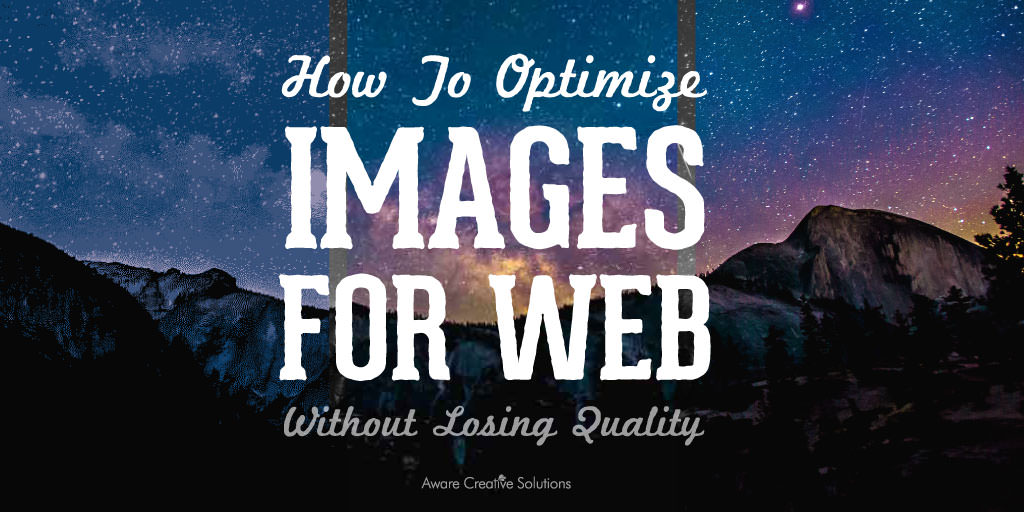
- #Optimize images for web without losing quality how to
- #Optimize images for web without losing quality software
Simply put, image optimization works by using compression technologies such as "lossy" and "lossless" which help to reduce the overall file size without any noticeable quality loss. As we've seen, the most popular image optimization techniques, compression and reduction, often don't strike the right balance between quality and performance and risk damaging the visuals of your work in order to optimize website speed. Using unprofessional or poorly optimized web images can seriously impact your shopping experience and even your search engine rankings. If you have ever received an image optimization recommendation from your WordPress hosting or speed check tool, it simply means that you need to reduce the file size of your images by optimizing them for the web. Once the image is loaded into WordPress, TinyPNG applies the appropriate optimization algorithm based on the content of the image and then replaces the original file with the compressed artifact. If you're looking for a high-quality online image compression tool, TinyPNG is a web application that lets you drag and drop up to 20 images of 5MB or less into your browser and optimize them all at once.

You can also save the image as usual and then easily compress it using web tools like TinyPNG or JPEG Mini. JPEG Mini: With the JPEG Mini app, you can further optimize and compress images without losing data to further reduce file size. Our preferred method for reducing file size without significantly degrading image quality is to use Photoshop's Save for Web feature.īy choosing the right combination of file format and compression type, you can reduce image size by up to 5 times. One way to reduce the file size of an image is to use the Save for Web command in Adobe Photoshop Adobe Photoshop.
#Optimize images for web without losing quality software
Regardless of the editing tool or software you use, resizing and resizing images before saving and exporting them can significantly reduce file size. By using the image resizer, you can reduce the size of your photos without affecting their quality. If your image editing software doesn't offer good compression options, if you're not using a platform that does it automatically for you, or if you're unsure of the level of quality loss appropriate for each image, you can use another tool. Most image editing tools will let you adjust the compression level for your JPEG files. You can use one of many plug-ins and image enhancement tools to automatically compress images by up to 80% without noticeable loss of image quality. Some will allow you to resize your images and reduce their size, while on the other hand, if you use WordPress, others can optimize the images you upload.


Even better, you can optimize your images with free, easy-to-use tools and a website builder.įor WordPress sites, there is also a TinyPNG plugin for WordPress that automatically optimizes new images uploaded to the CMS.

Taking the time to optimize your images before uploading them to your website will result in faster page loading, fewer bounces, and higher rankings in the SERPs. Here are six key strategies you can use to optimize your image files, reduce page load times, and improve user experience.
#Optimize images for web without losing quality how to
Podcast Content In this article, we will teach you how to optimize images for the web without losing quality and the file types you should be using.


 0 kommentar(er)
0 kommentar(er)
